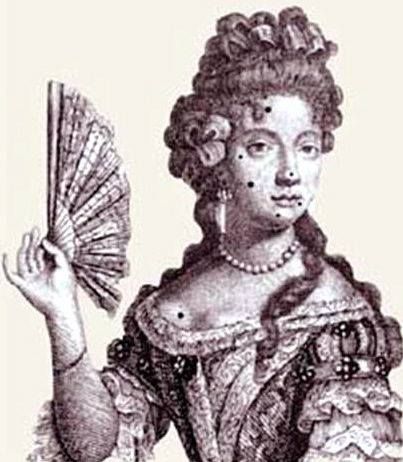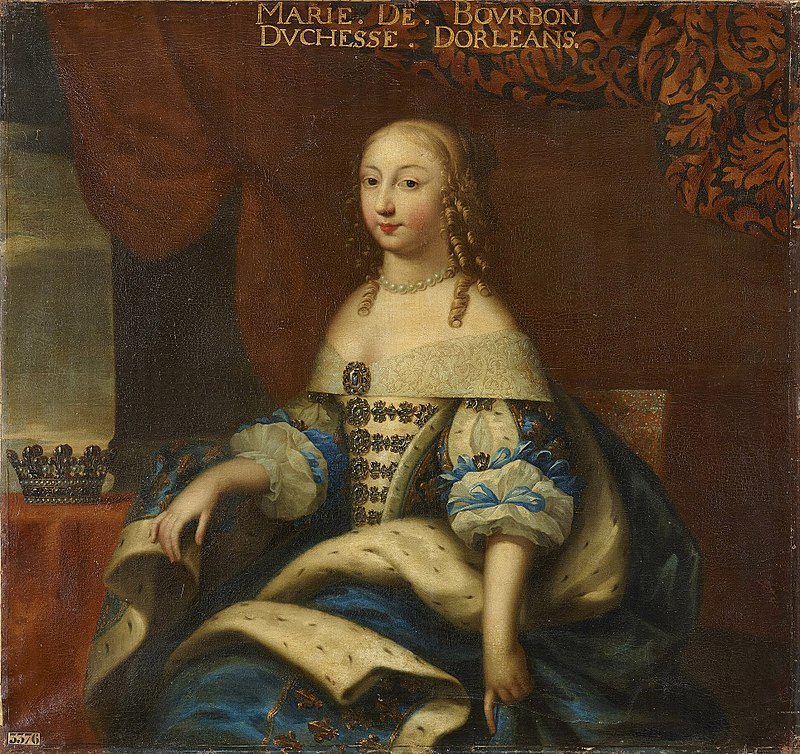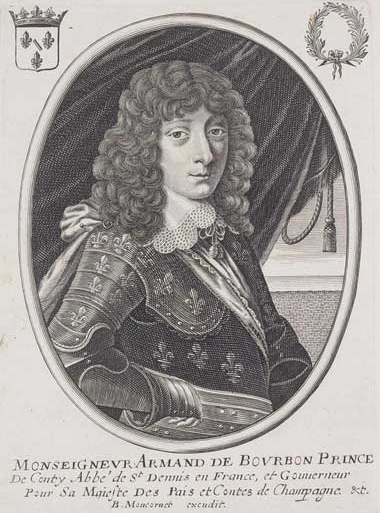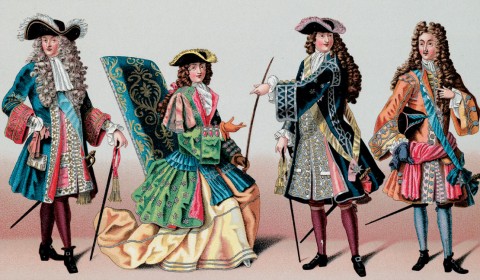Henri-Jules de Bourbon, Prince de Condé
Henri-Jules was the oldest child of Louis de Bourbon, aka le Grand Condé, and his wife Claire-Clémence de Maillé-Brézé, and born on 29 July in 1643. While his father was a famous man of the military, Henri-Jules was best known for his insanity.

From the day of his birth, on which he was also baptised at Saint-Sulpice, Henri-Jules was known as the Duc d’Albret until he was three years old and his father succeeded to the title Prince de Condé. Henri-Jules then inherited his father’s previous title of Duc d’Enghien.
The Duc d’Enghien followed his father, along with his mother, into exile as he was still a child. His father had mingled in the Fronde and turned against the King, for which he was exiled from France. Henri-Jules already showed strange behaviour patterns as a child and the older he got, the worse it got. He was trained to follow the steps of his father and to become a great military commander, but only inherited little of le Grand Condé genius in that department. But he was by no means unintelligent. “No one,” says Saint-Simon, “was ever endowed with a keener or more varied intelligence, which extended even to the arts and mechanics….”
Henri-Jules, showing strange behaviour or not, was still a good marriage prospect. His father was the current Premier Prince du Sang and Henri-Jules would succeed to that title, along with Prince de Condé, at some point. It was briefly considered he should marry Élisabeth-Marguerite d’Orléans, a daughter of Gaston de France and Marguerite de Lorraine, but that option was dismissed. He married Anne de Bavière, daughter of Count Palatine Edward of Simmern and Anne de Gonzague. The bride was lovely and a little shy, the groom not too interested in her. The wedding took place at the Louvre on 11 December 1663 in presence of King and court. It turned swiftly into a nightmare for the bride.
Due to his unstable mental condition, Henri-Jules was nicknamed Condé le Fol. He was rather fond of practical jokes, that could be of a malicious nature, and tyrannised his young wife. A wife was her husband’s property, and he made sure she never forgot it. He commanded her about, for the fun of it and to show is husbandly authority, and beat her frequently. She tried to hide her bruised as best as possible under her hair and lace.
They had ten children: Their first child and daughter, Marie-Thérèse, was born 1666, married François-Louis de Bourbon-Conti. A son, Henri, was born in 1667, but died young in 1670. Louis, born in 1668, succeeded his father. Another daughter, Anne, was born in 1670 and died not yet aged five in 1675. (Louis-)Henri, born in 1672, died aged three. Another Louis-Henri was born in 1673 and died in 1677. Anne-Marie-Victoire was born in 1675 and died aged twenty-five. Anne-Louise-Bénédicte, born in 1676, married the Duc du Maine, a son of Louis XIV and Madame de Montepan. Marie-Anne, born in 1678, Louis-Joseph de Bourbon, Duc de Vendôme. Another daughter, only known as Mademoiselle de Clermont, was born in 1679 and died the following year. All of the children that made it into adulthood, were unusually small. The girls were nicknamed “dolls of the Blood” or less flatteringly “little black beetles”, since they were all quite tiny, hunchbacked and had a strange dark complexion. Louis had a yellowish-orange tint to his skin.

The Duc d’Enghien is described as ugly, but managed to get himself a mistress in 1665. It was Françoise-Charlotte de Montalais, whose sister was in service of Madame and locked up in an Abbey because of her intrigues. Henri-Jules and Françoise-Charlotte had a daughter together, Mademoiselle de Châteaubriant, and according to rumours, her papa shoved her into the King’s direction in hopes to regain a bit of favour.
Since he was trained to be a soldier, and a member of the royal family, Henri-Jules was appointed to military positions… but only in name. Louis XIV and Louvois could nor trust Henri-Jules due to his mental state.
As le Grand Condé died in 1686, after getting the smallpox while nursing Louise-Françoise de Bourbon, daughter of Louis XIV and Madame de Montespan, which married Henri-Jules heir Louis in 1685, Henri-Jules succeeded to the title Prince de Condé. He moved into his father’s chateau at Chantilly and continued his father’s work to pretty the chateau up. Apparently, his movements were always hard to predict and he would change location at a moments notice, thus every day four dinners were prepared for him on four different locations. One at Chantilly, one at the Hôtel de Condé in Paris, one at Ecouen and one wherever the court was in residence. The prepared meals were nothing too fancy however, only a soup along with half a chicken and a bit of bread.
Henri-Jules hardly held big entertainments at Chantilly. His usual company was a handful of learned Jesuits and when he walked the grounds of the chateau, four secretaries followed him. It was their task to write his ideas down concerning renovations and additions at Chantilly. If he was not busy with Chantilly, he engaged in money lending. Preferably to members of the Parlement, which then, so he hoped, would help in with his various lawsuits.
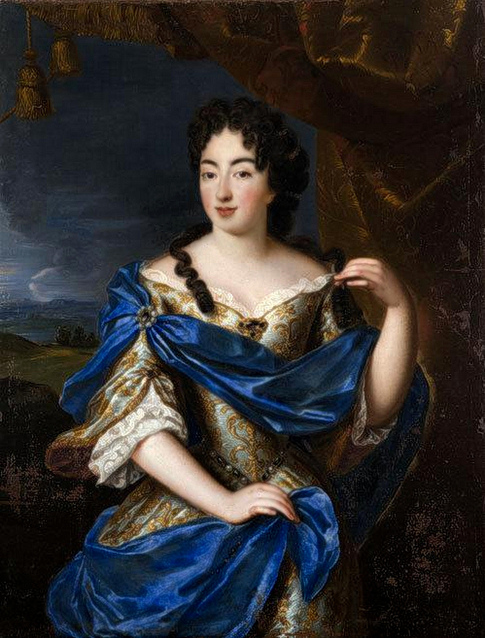
Although he treated her very badly, the Princesse de Condé tried to help him as much as she could with his mental problems. She endured the beatings, for which she was praised by the court, and always tried to support him. He hardly allowed her any freedoms, but claimed a lot of those for him. By then, Henri-Jules was showing signs of lycanthropy too, a rare psychiatric syndrome that involves a delusion that the affected person can transform into, has transformed into, or is a non-human animal… which means, at times, the Prince de Condé thought he was a dog, or some other animal, and acted as such. His son, Louis, suffered of the same and also inherited Henri-Jules cruel nature and inclination to violent outbursts.
Henri-Jules fell madly in love with the Marquise de Richelieu at some point. Although not handsome, Henri-Jules was very rich and that was what the Marquise de Richelieu found so tempting about him. As Henri-Jules found out the Marquise was also flirting with the Comte de Roucy, he made quite the scene. Out of fear to lose the financial support, the Marquise suggested to lure the Comte to her for a private meeting, during which men hired by Henri-Jules could kill the Comte. Condé was so horrified by the suggestion that he hurried to the Comte at once and told him all about it. Both men broke with the Marquise afterwards.
During the last years of Henri-Jules life, his strange behaviour reached new heights. Not only did he bark randomly, had fits of madness and tormented his wife, once he could not resist to jump into the freshly made bed of the Marechale de Noailles, while crying in ecstasy “Oh, le bon lit! Le bon lit!“.
The strangest scene of it all, is probably his last one. Henri-Jules got gout and fevers, which weakened him to the point of being bedridden. As his doctor urged him to eat something to regain his strength, he argued and insisted, all serious, he could not eat anything for he was already dead and the dead do not eat. The doctor tried it again and again, but the reply was the same: Henri-Jules told them he was already dead… while being still very much alive. Thus is doctor hired some random people, ushered them into Henri-Jules bedroom, and claimed those people were dead for a while already, but even the dead eat occasionally, which the pretended corpses then showed him by consuming food. The Prince de Condé began to eat again, but only when he was in company of his fellow-corpses.
Henri-Jules died aged 65 in Paris on 1 April 1709. His son Louis became the new Prince de Condé and died only eleven months later.
